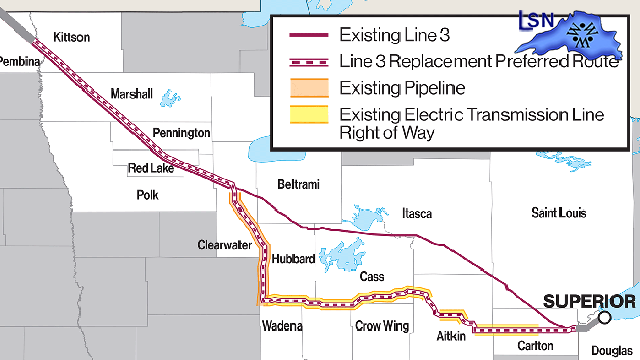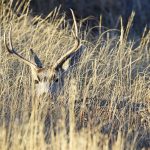The Minnesota Department of Natural Resources has made decisions granting the remaining eight of 10 required DNR permits, licenses and approvals for the proposed Enbridge Line 3 pipeline replacement project. The DNR made decisions granting two prior approvals on Oct. 19.
Enbridge is proposing to construct a new oil pipeline in Minnesota, replacing its existing Line 3. Line 3 is one of six Enbridge oil pipelines that cross Minnesota in what Enbridge calls its mainline system.
After careful consideration of applicable state laws, all input received and the administrative record, the DNR issued the following additional permits/licenses today:
- Work in Public Waters Permit for Willow River Bridge
- Work in Public Waters Permit for Public Water Wetlands on Private Land
- Water Appropriation Permit for Dust Suppression
- Water Appropriation Permit for Trench and Construction Dewatering
- Water Appropriation Permit for Hydrostatic Testing and Horizontal Directional Drilling
- Utility Crossing License for State Land
- Utility Crossing License for Public Water
- Threatened and Endangered Species Taking Permit
This means that the proposed project meets the applicable state of Minnesota environmental regulatory requirements to receive these approvals.
“As we did prior to making our Oct. 19 decisions, the DNR conducted a thorough review of these applications, and has determined that these final eight approvals, as conditioned, meet the requirements of state statutes and rules,” said DNR Deputy Commissioner Barb Naramore. “We carefully considered all comments and other input, as reflected in our decision documents.”
The Willow River Bridge would be constructed in Aitkin County and would facilitate access for long-term pipeline operation and maintenance. The construction of the bridge is regulated through a permit for work in public waters. This permit sets conditions, such as erosion control measures, to minimize impacts from the construction activity to the bed and banks of the river and to protect riverine resources.
The Work in Public Waters for Public Water Wetlands on Private Land permit sets conditions for construction activities at five public water wetlands that are not covered under the utility license to cross public water. Specifically, this permit addresses construction activities and requires conditions to protect and conserve natural resources in these areas.
Water appropriation permits direct the conditions under which a permittee can use, or appropriate, ground or surface water for a project. Conditions are designed to protect and conserve natural resources and ensure sustainable use of water. Today’s decisions authorize water appropriations from specific waterbodies for the purposes of dust suppression during construction, integrity testing of pipe segments, and horizontal directional drilling activities. The trench and construction dewatering appropriation permit establishes the conditions for removing water (precipitation or groundwater) that accumulates in trenches and on worksites during construction along the route.
The Utility Licenses to Cross State Land and Public Water establish conditions for construction and operation of utilities across DNR-administered lands and 66 public waters. These licenses address construction activities and establish conditions to protect and conserve natural resources. The land crossing license also addresses loss of natural resource revenue from impacted state lands. Both licenses establish certain conditions governing continued operation of the pipeline, including general maintenance activities on state lands and in public waters.
The Threatened and Endangered Species Taking Permit addresses activities that would impact a state-listed threatened or endangered species. The DNR’s review process ensures species have been properly identified through approved survey methods and that all reasonable measures have been taken to avoid taking the species. The permit requires over $2.5 million in compensatory mitigation for takings affecting nine plant species. These funds will be used to fund research, conservation planning, surveys, land protection and/or land management activities that contribute to the recovery of these species.
The DNR previously issued permits/approvals for the Gully 30 Fen Calcareous Fen Management Plan and the Gully 30 Fen Water Appropriation Permit.
In addition to these applications, Enbridge has requested short- and long-term leases on state land for construction access/staging and ongoing operation and maintenance. The DNR is making these lease decisions in conjunction with the associated permit/approval decisions.
The DNR’s regulatory role with respect to the Line 3 project is focused on avoiding and minimizing adverse impacts associated with construction, operation and maintenance of the new pipeline on the route approved by the Minnesota Public Utilities Commission. The need for the project and the pipeline construction route were decided by the PUC in 2018 and reaffirmed as recently as June of this year. Enbridge must obtain additional regulatory approvals from other state, tribal and federal agencies prior to construction.
Last modified: 11/13/2020













